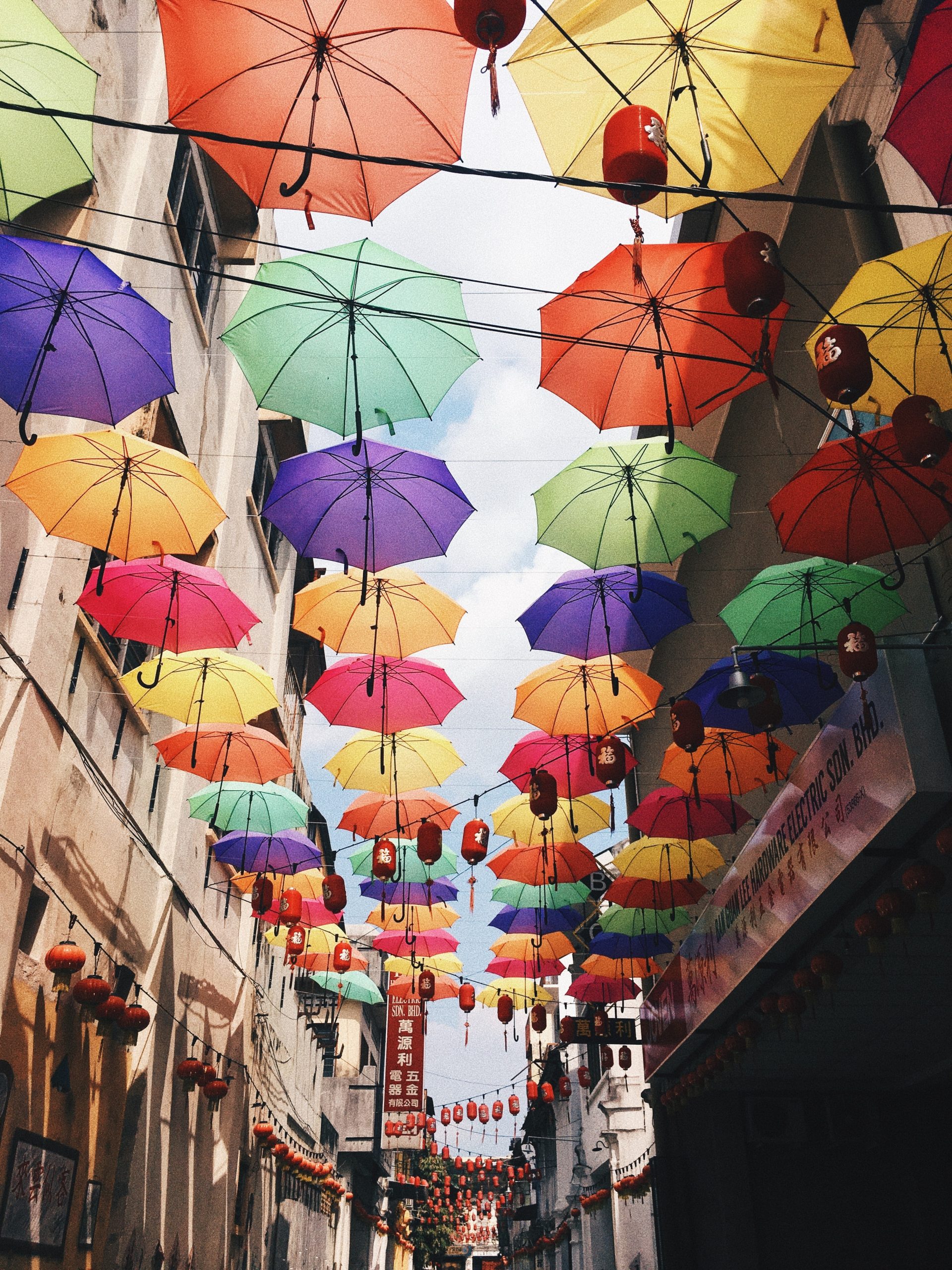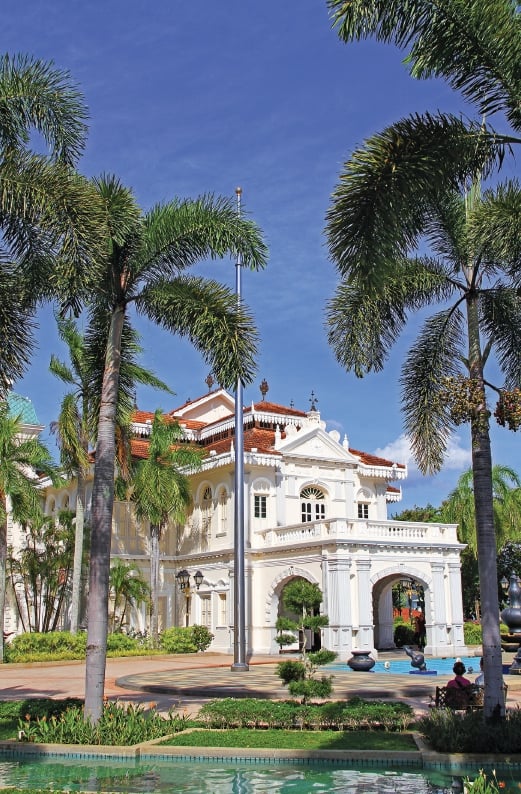
The royal town of Kuala Kangsar
Published on February 16, 2017 | by nst.com.my

THE North South Highway is a speedy conduit for vehicles moving through Malaysia from Singapore in the south to Thailand in the north. The highway snakes its way through Peninsular Malaysia and provides comfortable driving conditions for those in a hurry.
Being one for snooping around sleepy old towns, I enjoy branching out to explore the old roads that are less travelled.
One of my favourite deviations is into Kuala Kangsar, located between Ipoh and Taiping in the north of the peninsula. Kuala Kangsar is the Perak royal town and now that the highway bypasses the town, it’s become a bit of a tourist backwater. However, a detour into the town is highly recommended not only because there are few tourists but also due to the landmark architecture and stately buildings located here.
Kuala Kangsar is situated just 35km north of Ipoh, on the western banks of the Perak River. From Ipoh, the highway passes through karst topography dominated by rounded limestone hills blanketed in unique vegetation that can survive the harsh conditions.
-
Hipster doughnuts: Kuala Kangsar’s latest attraction
-
Lorry driver dies in trailer collision in Kuala Kangsar
-
Kuala Kangsar MP launches SK Raja Muda Musa ‘Dengue Patrol’
-
Two new BN MPs sworn in, including widow of Kuala Kangsar rep
The waters of Sungai Perak, the second-longest river in Peninsular Malaysia, flow through the town. Occasionally the river floods but nowadays, much of this is controlled by the country’s largest dam across the Temenggor River, which is a tributary of the Perak River.
The dam is 150km upstream near the Thai border and the East West Highway. Visitors to this part of the world can drive from Kuala Kangsar to Grik and then onto Baling, the East West Highway, as well as into southern Thailand via Betong.
ROYAL REFUGE
Kuala Kangsar has been the home to Perak’s royal family since Sultan Muzafar’s reign in the 18th century. Both the current and the former temporary royal residence are two of Kuala Kangsar’s main tourist attractions.
The older and considerably smaller of the two residences is Kenangan Istana or Kenangan Palace. It was previously known as Istana Lembah and was erected as a temporary residence while the nearby Istana Iskandariah was being built.
This is arguably one of the most interesting architectural sites in the whole of the country. It is also one of the most visited buildings in the town but mostly, by those who simply drive past but it is worth stopping for a closer inspection.
Istana Kenangan was constructed in 1931 as a temporary palace for Sultan Iskandar and interestingly, it was built without the use of any nails. The historic records also show that it was erected without using any architectural plans.
The intricate detail found in the woven wall panels is made more prominent through the use of a striking combination of a white, yellow and black colour scheme. Above the wooden shutters surrounding the windows are several fine floral woodcarvings. The wall panels are either made from bamboo or the bark of the Bertam Palm.
The two-storey wooden structure, built between 1913 and 1917, once housed many interesting exhibits and historical photographs of the Perak Sultanate, as well as a few royal heirlooms. These have been transferred to the brand new (although the architectural style is old) Galeri Sultan Azlan Shah, located closer to town near Ubudiah Mosque.
Conspicuously located on a hilltop, overlooking the former palace, is the current residence of Sultan Nazrin Shah, Perak’s current reigning head of State. The imposing marble structure with a series of towers, topped by golden onion domes, combines both Islamic and art deco architectural styles. This grand palace was constructed in the 1930s to replace the Istana Iskandariah. While the palace is not open for public inspection, visitors may take in the view from various oblique angles surrounding the palace.
PHOTOGENIC MOSQUE
Nearby, the Ubudiah Mosque is hard to miss, as visitors have to drive past it to reach the two palace buildings. The mosque is undoubtedly the country’s most photographed mosque and images of it are found in all Malaysian guidebooks, adorning postcards, in tourism brochures, Tourism Malaysia posters, and Perak Tourism promotional literature.
The distinctive Moorish-style, golden onion domes and black-and-white marble minarets dominate the Kuala Kangsar skyline. Construction commenced in 1913 and it was officially opened in 1917.
According to the history books, work on the mosque was interrupted on several occasions. There is one story that two elephants belonging to Sultan Idris rampaged across the imported Italian marble tiled floor and created considerable damage.
MALAY COLLEGE
A few kilometres away on the way into town, Malay College Kuala Kangsar, the country’s premier residential boys school, dominates the district. The school opened in 1905 originally for members of the royal family. However, it now accommodates boys from all over the country, who have shown academic excellence. It’s not surprising that many call it the “Eton of Malaysia”. Students from the school usually go on to take up senior political and economic positions in the country.
The colonnaded, brick building was originally painted red but these days, the building is mostly white in colour. One could be mistaken for thinking the school looks a little British, especially with its expanse of lush sporting fields that surround the buildings.
Across the road is a charming octagonal-shaped pavilion called the Pavilion Square Tower. It was built in 1930 as a viewing gallery from which the royal family could watch polo played on the surrounding fields.
One of the schools celebrated teachers was J. B. Wilson who taught here in the 1950s. He later became a novelist taking on the name of Anthony Burgess and later, penning the book that became a successful and acclaimed movie, A Clockwork Orange (or was it meant to be Clockwork Orang?).
RUBBERY FACTS
What is considered the country’s oldest rubber tree is also located in the town, just across the road from the Polo Pavilion. It is the sole survivor of one of the experimental trees that originated from Brazil via London’s Kew Gardens. Subsequently, these were sent to Singapore for experimental purposes in the late 1870s before their final journey to Malaysia for extensive cultivation throughout the country.
The man involved in the later sections of the journey was H.N. Ridley (also known as Crazy Ridley), who planted the rubber seeds in Kuala Kangsar in 1877. The journey of these seeds half way around the world led to one of the most successful plantation industries in Malaysia and the backbone of the economy for many decades. The tree is located near the District Office at the corner of Jalan Tun Abdul Razak and Jalan Raja Chulan. Ridley is immortalised for all his efforts with a simple plaque beside the tree.
Kuala Kangsar is situated just off the North South Highway about 250km drive north of Kuala Lumpur. The train station is located close to the Malay College and all trains stop here. Taxis can be hired quite cheaply for a drive around all the main attractions.
Kuala Kangsar is a great place to rest awhile and to discover a historically significant part of Malaysia. For those who are not in a hurry, an overnight stay is recommended although the accommodation options are limited with hotels in Ipoh probably being better options.
More stories
>>> The Territorial Army Founder Lines From Lambor Kiri
>>> Kilang kopi Antong masih menggunakan kaedah tradisional untuk pengeluaran kopinya
>>> 10 Malaysian football legends we need to remember
>>> History Of Cameron Highlands
>>> Forgotten Perak town was backdrop of Sybil Kathigasu’s heroism
>>> Town that grew from a tin tycoon’s mansion
>>> 7 Hollywood Movies Filmed in Malaysia
>>> Ipoh’s Concubine Lane draws foodies and tourists
>>> There’s a small, charming town near Ipoh that’s rich in biodiversity
>>> Hakka Villa To Reveal Revelational Past
>>> Ipoh Echo Readers’ Choice: Top 5 Ipoh Curry Mee
>>> Royal Belum Welcomes 10 Different Hornbill Species
>>> Ipoh Echo Reader’s Choice: Top 5 Kai Si Hor Fun In Ipoh
>>> Nostalgia: One Man’s Rubbish Is Another Man’s Collectable
>>> Han Chin Pet Soo
>>> 10 things about: Ruth Iversen Rollitt, an Ipoh girl at heart
>>> Nostalgia: Yeoh Ghim Khoon, Transport Entrepreneur
>>> ‘Ipoh Echo’: A community newspaper that has lasted 12 years and counting
>>> Arlene Terrace








